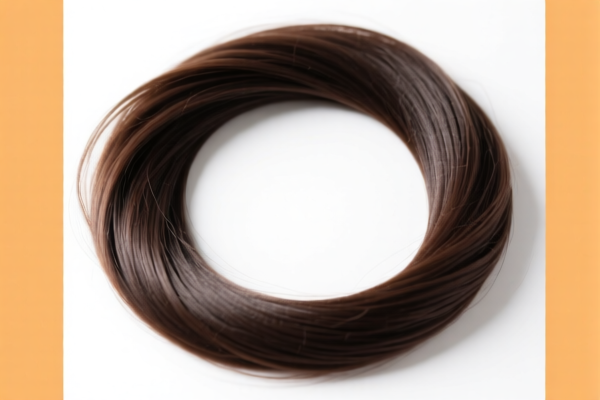| HS Code | Official Doc | Tariff Rate | Origin | Destination | Effective Date |
|---|---|---|---|---|---|
| 3304995000 | Doc | 55.0% | CN | US | 2025-05-12 |
| 3924905650 | Doc | 40.9% | CN | US | 2025-05-12 |




Okay, let's break down the HS codes and tax implications for your declared items, "HAIR CHALK". Here's a detailed analysis, presented in a structured format to help you understand the classification and potential duties:
Understanding HS Codes: A Quick Primer
The Harmonized System (HS) Code is a globally standardized system of names and numbers used to classify traded products. It's crucial for determining import/export duties and regulations. Here's how the codes are generally structured:
- First 2 Digits: Indicate the Chapter of the HS Code (broad product category).
- First 4 Digits: Specify the Heading (more specific product grouping).
- First 6 Digits: Denote the Subheading (even more detailed).
- Further Digits: Provide even greater specificity for national customs authorities.
Item 1: Beauty or make-up preparations and preparations for the care of the skin (other than medicaments), including sunscreen or sun tan preparations; manicure or pedicure preparations
- HS Code: 3304.99.50.00
- Chapter 33: Essential Oils and Resinoids; Perfumery, Cosmetic or Toilet Preparations. This chapter covers a wide range of beauty and personal care products.
- Heading 3304: Beauty or make-up preparations and preparations for the care of the skin (other than medicaments), including sunscreen or sun tan preparations; manicure or pedicure preparations. This narrows down the category to skin and beauty products.
- Subheading 3304.99: Other. This indicates the product doesn't fall into more specific categories within skin/beauty preparations.
- Further Digits 3304.99.50.00: Even more specific classification – likely for a particular type of "other" beauty preparation.
Tax Implications (Item 1):
- Basic Duty: 0.0%
- Additional Duty: 25.0%
- Additional Duty (Post April 2, 2025): 30.0%
- Total Tax: 55.0%
Important Considerations (Item 1):
- Product Composition: The classification as 3304 suggests it's not considered a medicament (drug). If it contains ingredients with medicinal properties, the classification might change, leading to different tax rates and regulations.
- Ingredient List: Provide a full ingredient list to customs. This is crucial for verifying the classification and ensuring compliance.
- Testing Requirements: Depending on the ingredients, you might need to provide testing reports to demonstrate compliance with safety standards.
- Labeling Requirements: Ensure the product labeling meets the import country's regulations (ingredient lists, warnings, etc.).
Item 2: Tableware, kitchenware, other household articles and hygienic or toilet articles, of plastics
- HS Code: 3924.90.56.50
- Chapter 39: Plastics and articles thereof. This chapter covers all products made of plastic.
- Heading 3924: Tableware, kitchenware, other household articles and hygienic or toilet articles, of plastics. This narrows down the category to plastic household items.
- Subheading 3924.90: Other. This indicates the product doesn't fall into more specific categories within plastic household items.
- Further Digits 3924.90.56.50: Even more specific classification – likely for a particular type of "other" plastic household item.
Tax Implications (Item 2):
- Basic Duty: 3.4%
- Additional Duty: 7.5%
- Additional Duty (Post April 2, 2025): 30.0%
- Total Tax: 40.9%
Important Considerations (Item 2):
- Plastic Type: The type of plastic used (e.g., polypropylene, polyethylene) can sometimes affect classification.
- Intended Use: Confirm the intended use of the item. If it's primarily for food contact, there might be specific regulations regarding plastic safety.
- Material Safety Data Sheet (MSDS): Provide an MSDS for the plastic material to demonstrate compliance with safety standards.
- Food Contact Compliance: If the item is intended for food contact, you'll likely need to provide documentation proving it meets relevant food safety regulations (e.g., FDA compliance in the US, EU regulations).
General Recommendations:
- Detailed Invoice: Ensure your invoice provides a very detailed description of the goods, including materials, intended use, and any relevant specifications.
- Country of Origin: Clearly indicate the country of origin on all documentation.
- Valuation: Accurately declare the value of the goods. Customs authorities will scrutinize valuations.
- Regulations Updates: Tax rates and regulations can change. Stay updated on the latest import requirements for your destination country.
- Consult a Customs Broker: For complex shipments or if you're unsure about classification, it's highly recommended to consult a licensed customs broker. They can provide expert guidance and ensure compliance.
Disclaimer: I am an AI assistant and this information is for general guidance only. It is not a substitute for professional legal or customs advice. Always consult with a qualified customs broker or legal professional for specific advice related to your import/export situation.
Customer Reviews
The guide was informative, but I wish there were more examples of how to classify similar products. Still, it was a solid resource.
I appreciated the detailed explanation of the 55% tariff on 3304995000. It helped me understand the cost implications for exporting hair chalk to the US.
The information on HS Code 3924905650 was helpful, especially the notes about plastic materials and food contact regulations.
Great breakdown of HS Code 3304995000 for hair chalk. The tax details and classification explanation were very clear.